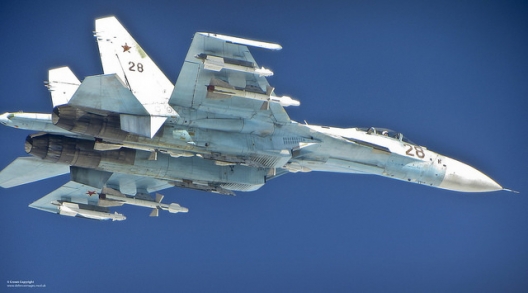 Just ahead of the U.S. presidential elections, Russian President Vladimir Putin appears to be pushing his conflict with the West to new heights. He has declared an end to a plutonium-disposal agreement with the United States. Two weeks ago, he stationed new cruise missiles in Kaliningrad, further bolstering a territory that already was bristling with weaponry. And Aleppo is bracing for a renewed Russian bombardment that may begin soon. Many Western policymakers say he may be taking advantage of end-of-term distractions in the White House to exert as commanding a position as possible before a new president takes office Jan. 20.
Just ahead of the U.S. presidential elections, Russian President Vladimir Putin appears to be pushing his conflict with the West to new heights. He has declared an end to a plutonium-disposal agreement with the United States. Two weeks ago, he stationed new cruise missiles in Kaliningrad, further bolstering a territory that already was bristling with weaponry. And Aleppo is bracing for a renewed Russian bombardment that may begin soon. Many Western policymakers say he may be taking advantage of end-of-term distractions in the White House to exert as commanding a position as possible before a new president takes office Jan. 20.
For the seven German fighter pilots who trade 24-hour shifts at this remote air base, the escalation has a practical effect: more close encounters with Russian fighter pilots high in the skies. The pilots often fly within 10 yards of the Russian jets, close enough to wave hello, or in one recent incident, see a Russian pilot flash a middle finger.
“Maybe he watched too much ‘Top Gun,’ ” said Lt. Col. Swen Jacob, the commander of the German contingent that is posted for a four-month rotation to a round-the-clock air-policing mission in Estonia.
The Germans have scrambled 34 times since they arrived for their latest posting in Estonia on the last day of August, rushing into the air to escort Sukhoi fighter jets, Ilyushin reconnaissance planes and Antonov transport planes. The majority of the traffic comes from runs in international airspace between Russian air bases near St. Petersburg and Kaliningrad, the Russian enclave wedged between Lithuania and Poland. Russian military flights often fly without transponders, making them invisible to civilian aircraft and raising the risk of midair crashes.
“The fighter aircraft are almost always armed to the teeth,” Jacob said. “Six kinds of missiles. They could carry up to 10….”
Defense officials say the flights in the Baltics are ultimately more annoying than menacing and that the Russian planes do not appear to be readying an attack on NATO nations. But they say that the behavior raises the risk of in-air accidents, which could escalate the already tense relations between Russia and the West. One senior Western defense official said that if an armed Russian fighter jet were to lock its targeting radar onto a NATO plane, that could be grounds to shoot it down. NATO jets have scrambled to intercept planes about 600 times this year, the majority of them in international airspace….
Jacob, the commander of the German detachment in Estonia, said that the NATO protocols are clear. If the Russian planes are flying in international airspace, as they nearly always do, there is no need to do anything more than monitor them and perhaps take pictures with the digital cameras the pilots keep strapped to their right shoulders.
But if a Russian plane violates NATO airspace — which has happened five times in Estonia this year — the situation could quickly escalate. The alliance’s rules of engagement are to try to communicate via radio. If that produces no response, pilots fly their plane on their sides to show off their weaponry, and then they try to push the aircraft out of NATO territory. A pilot also could fire a warning flare — but any decision to actually fire on the plane would be left to higher-ups at NATO, Jacob said.
Image: A Russian Su-27 Flanker jet photographed from an RAF Typhoon, June 17, 2014 (photo: UK Ministry of Defense)

